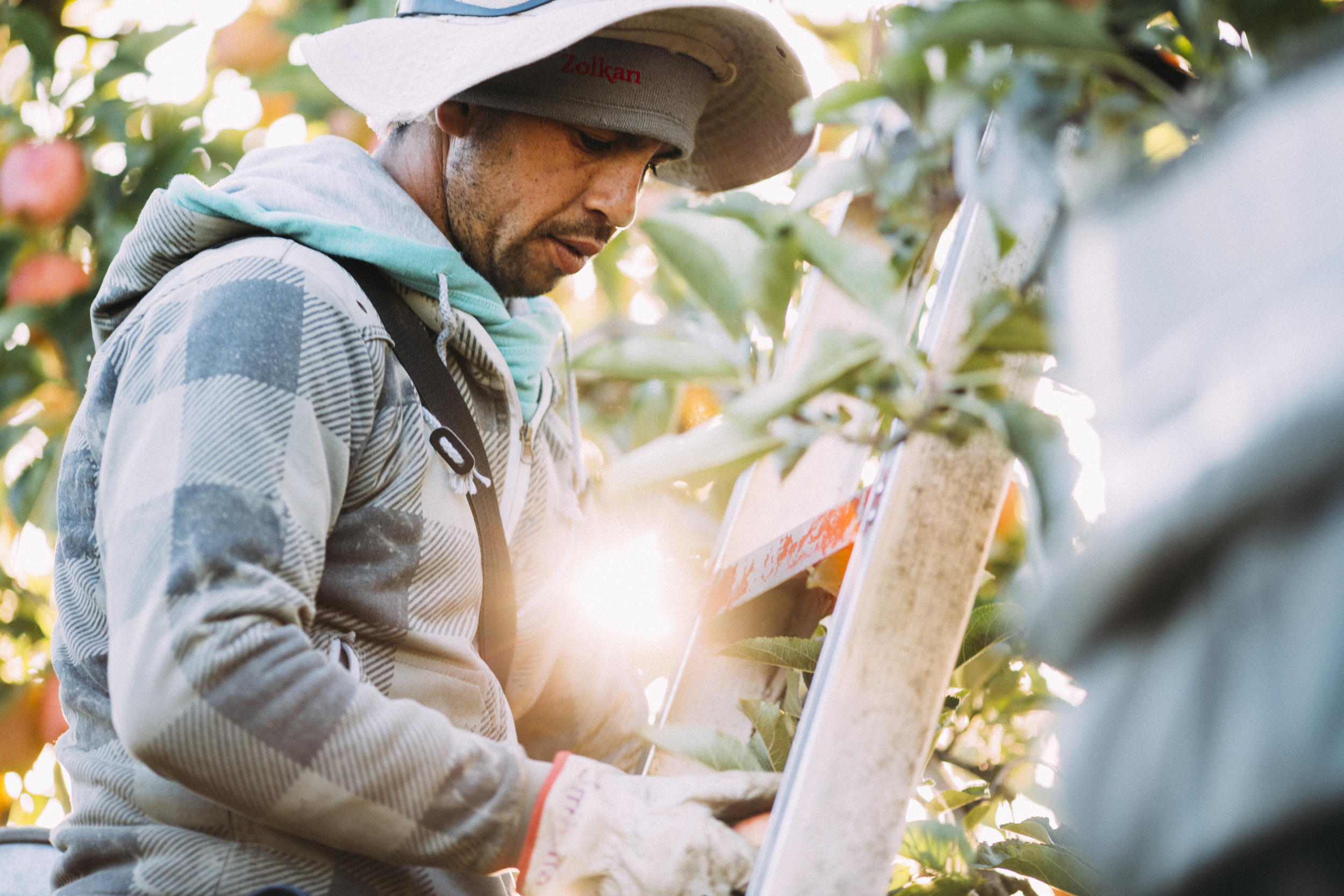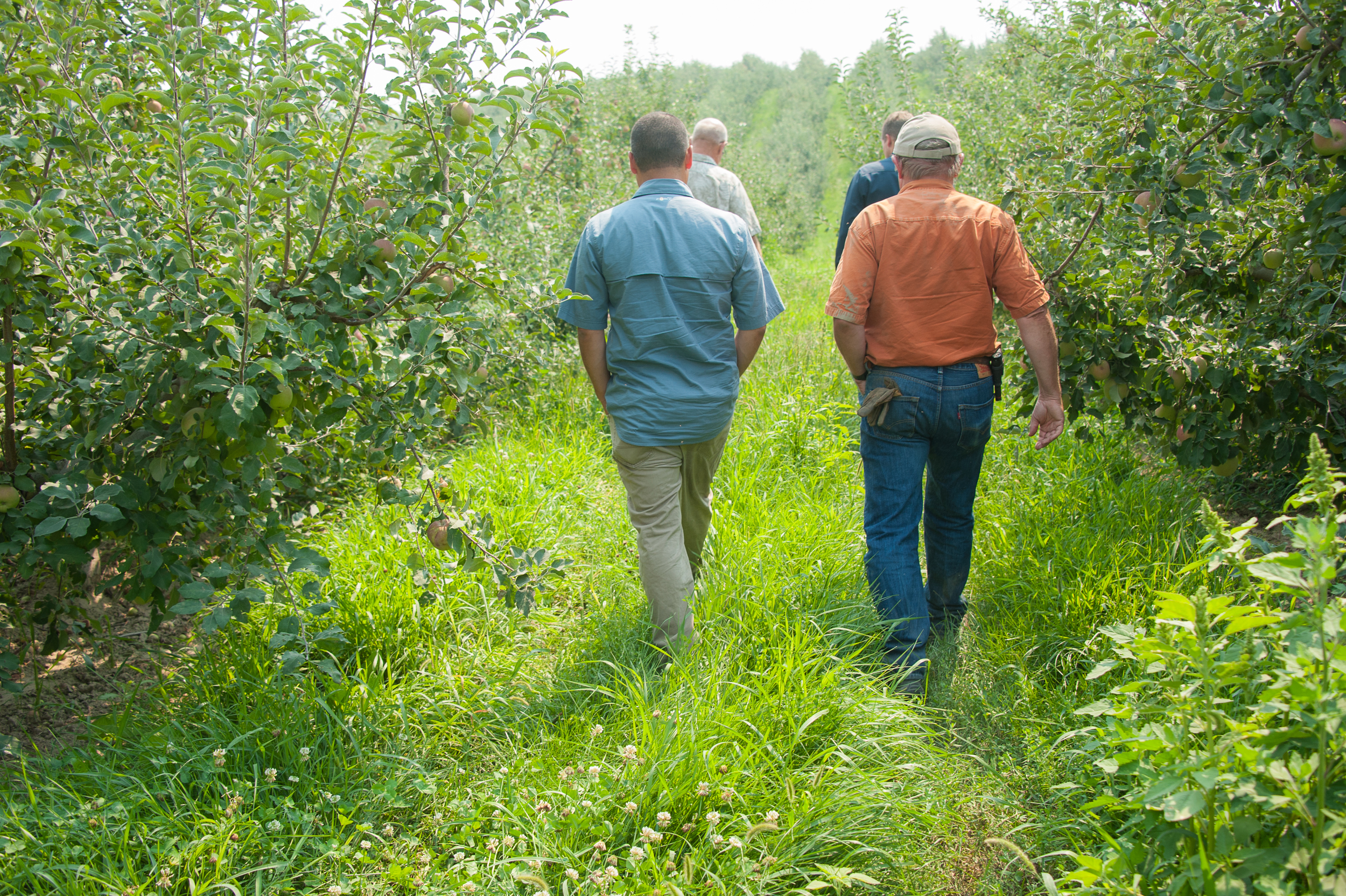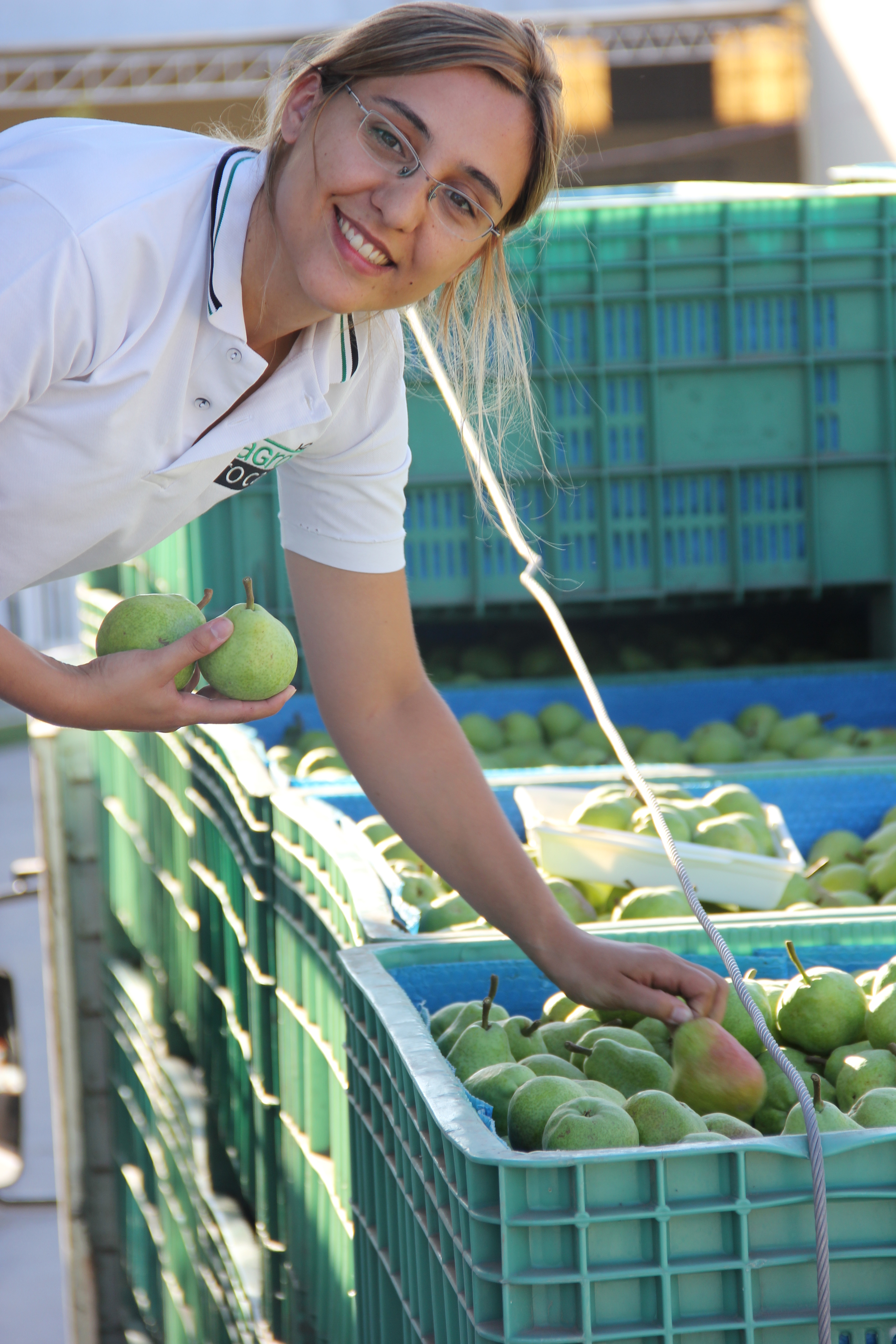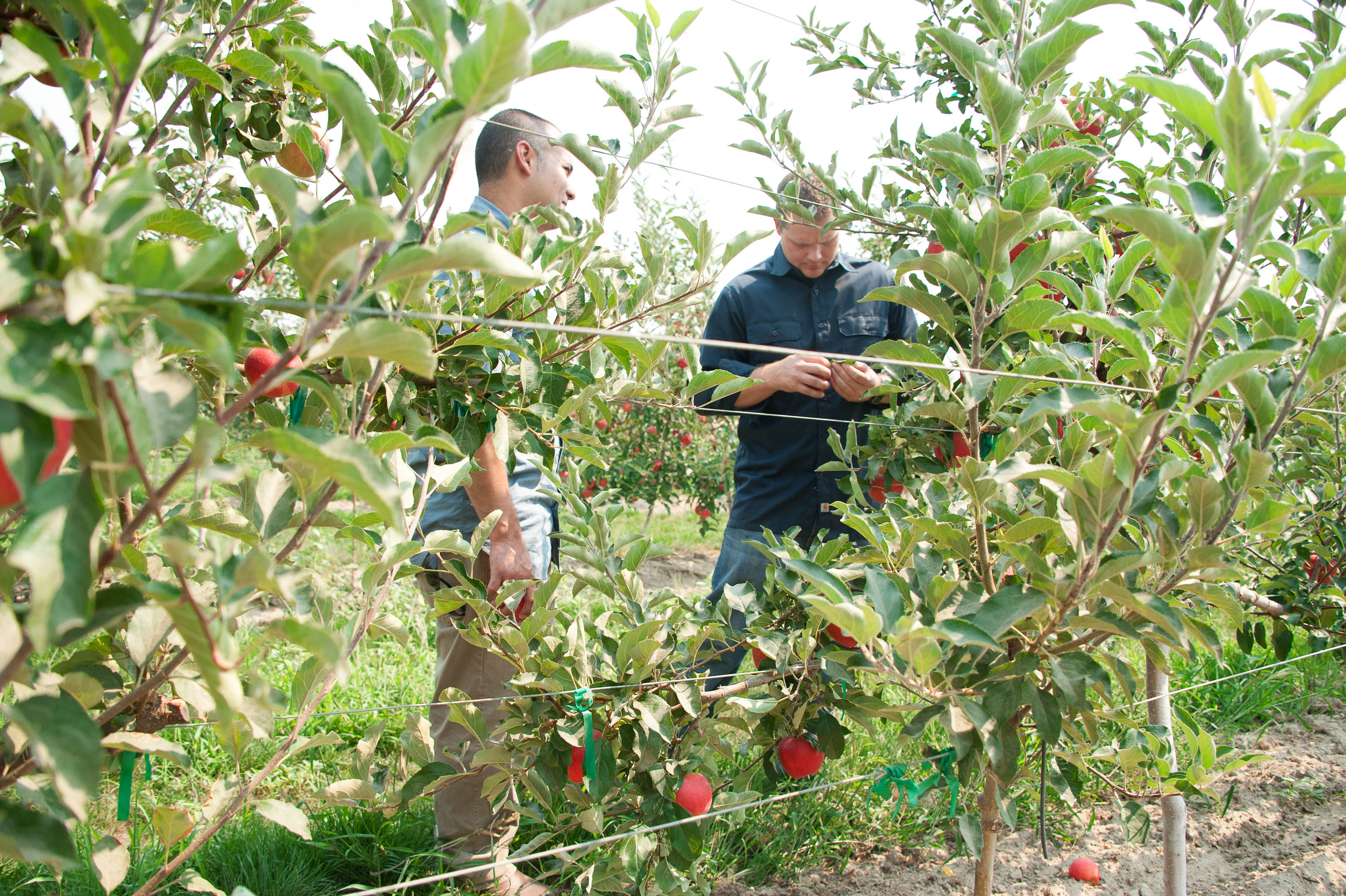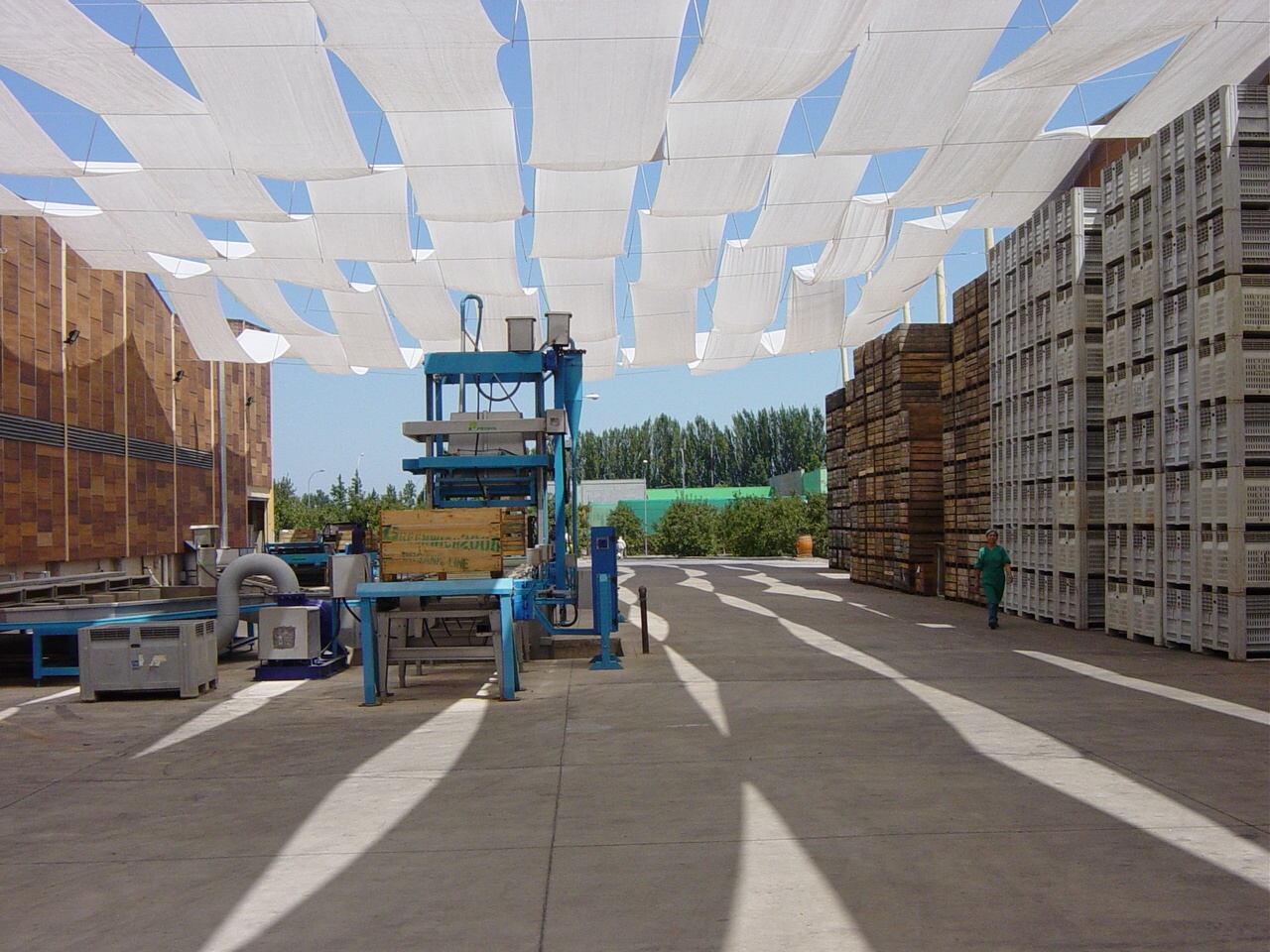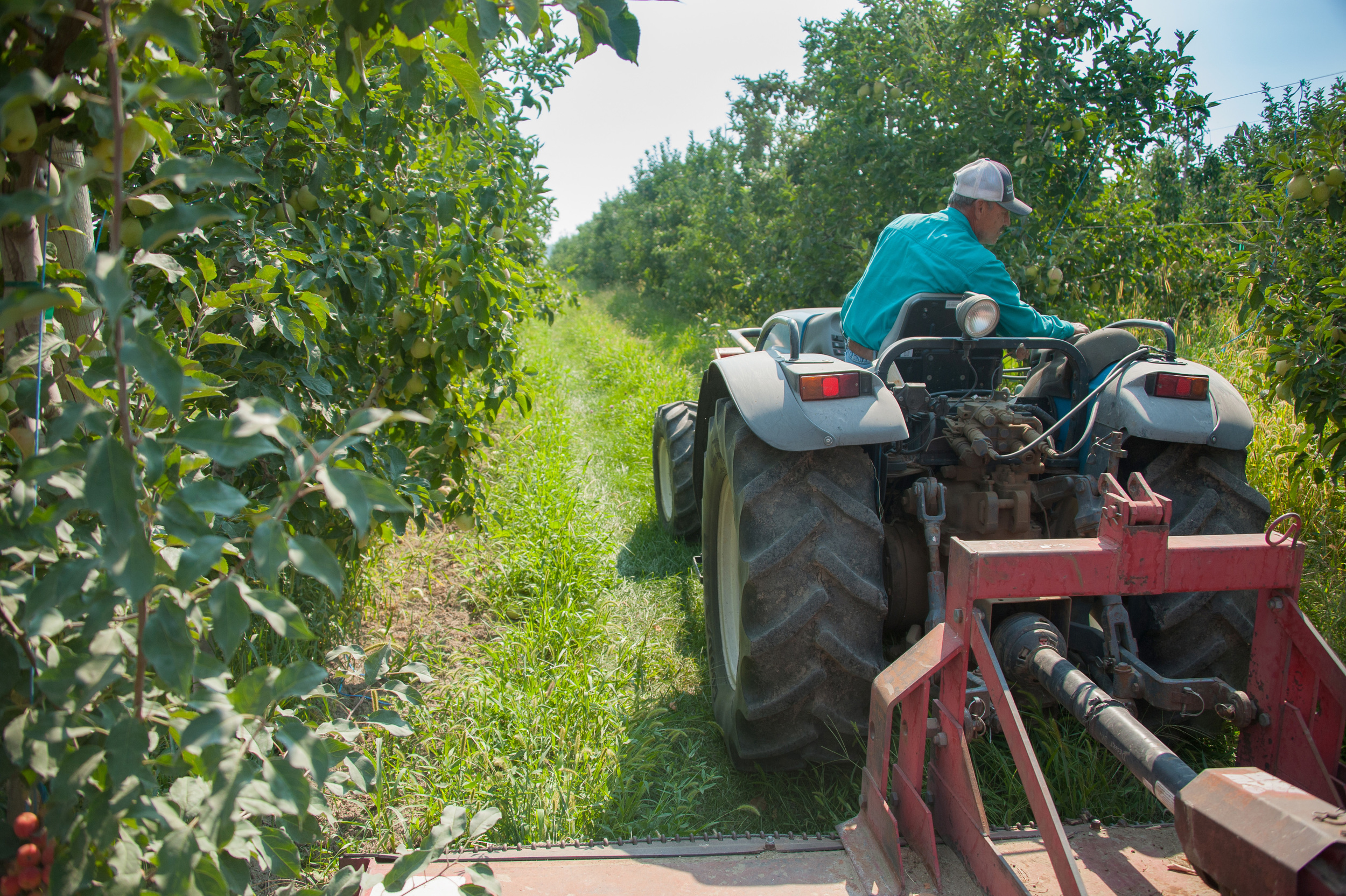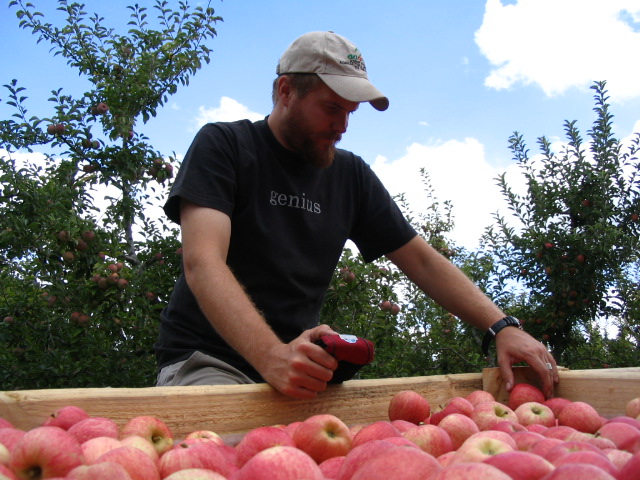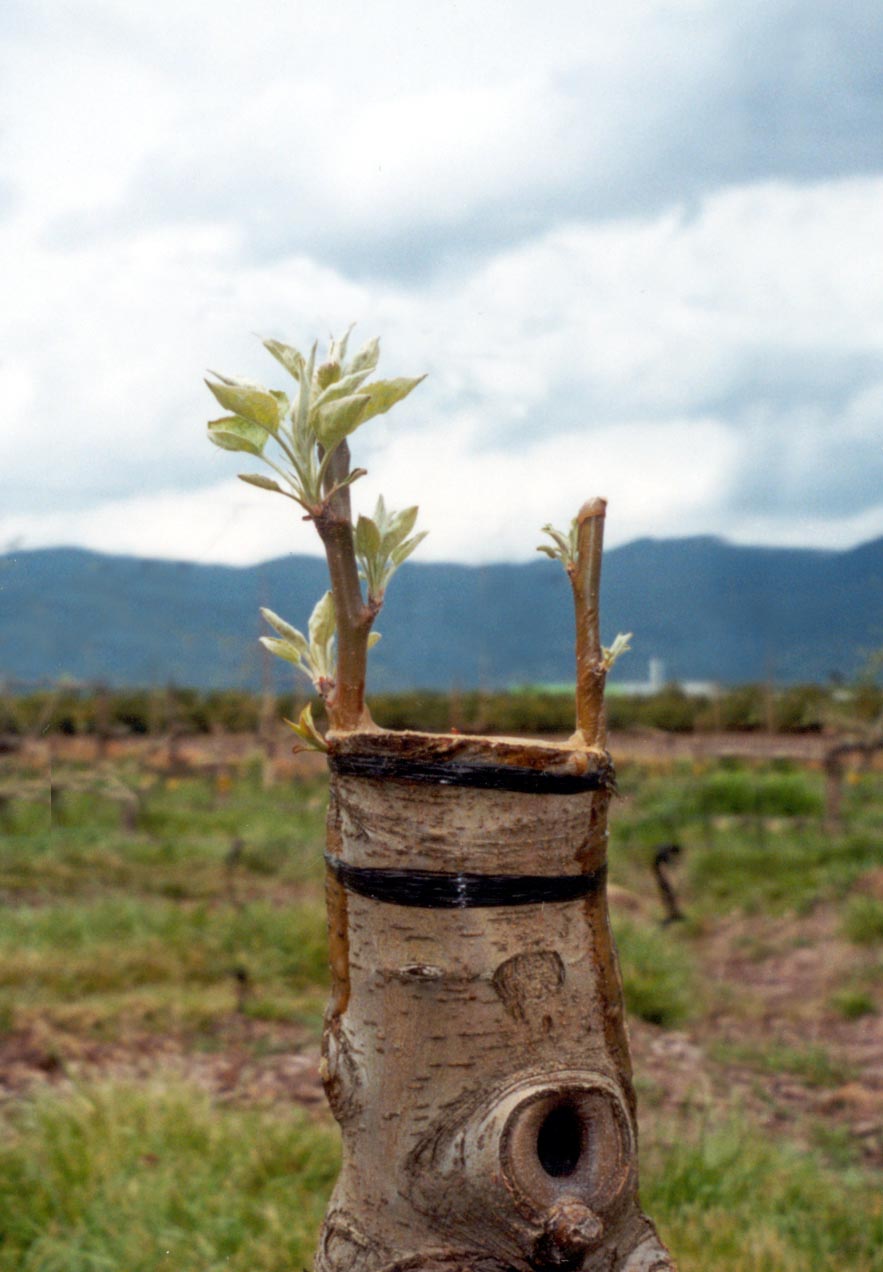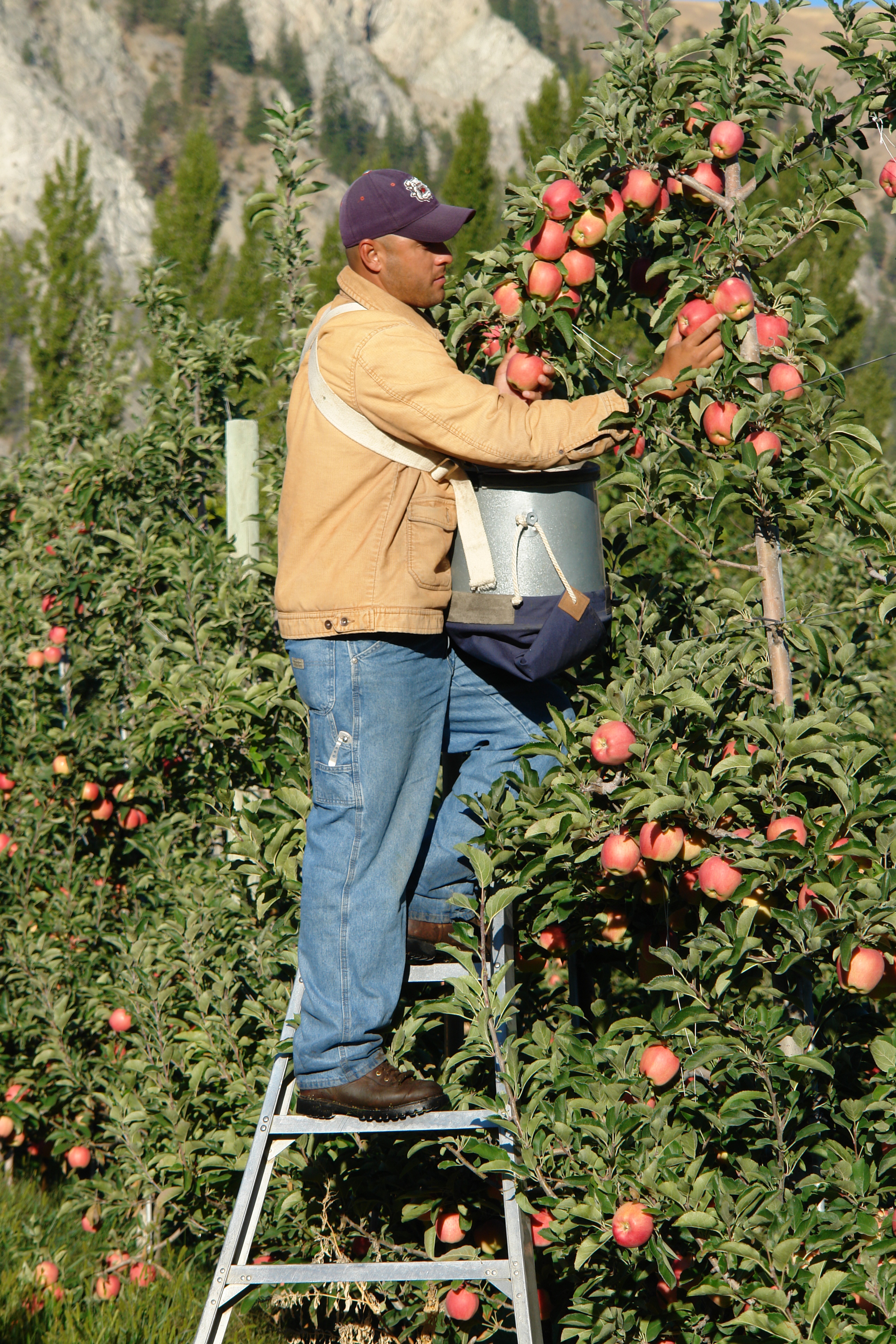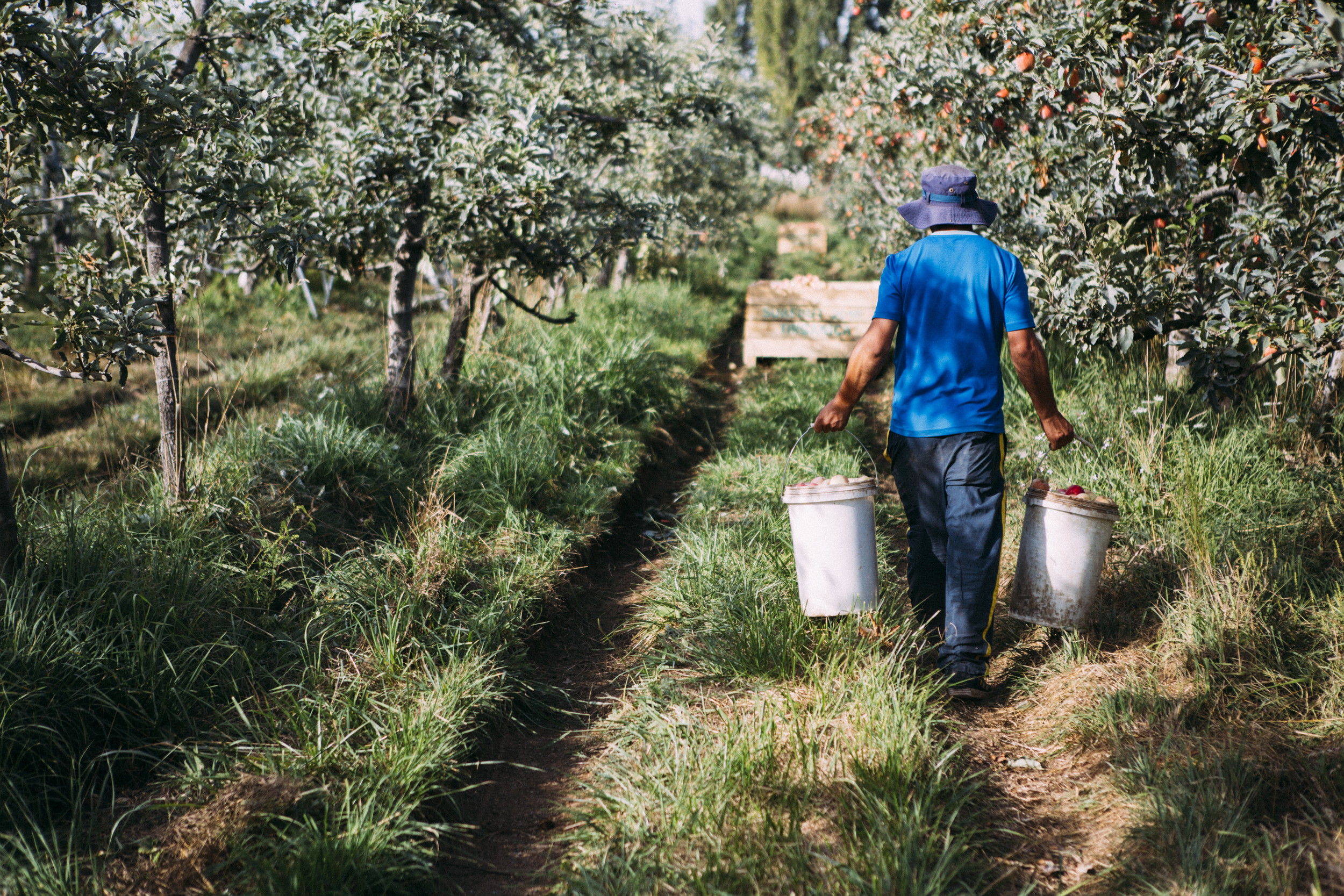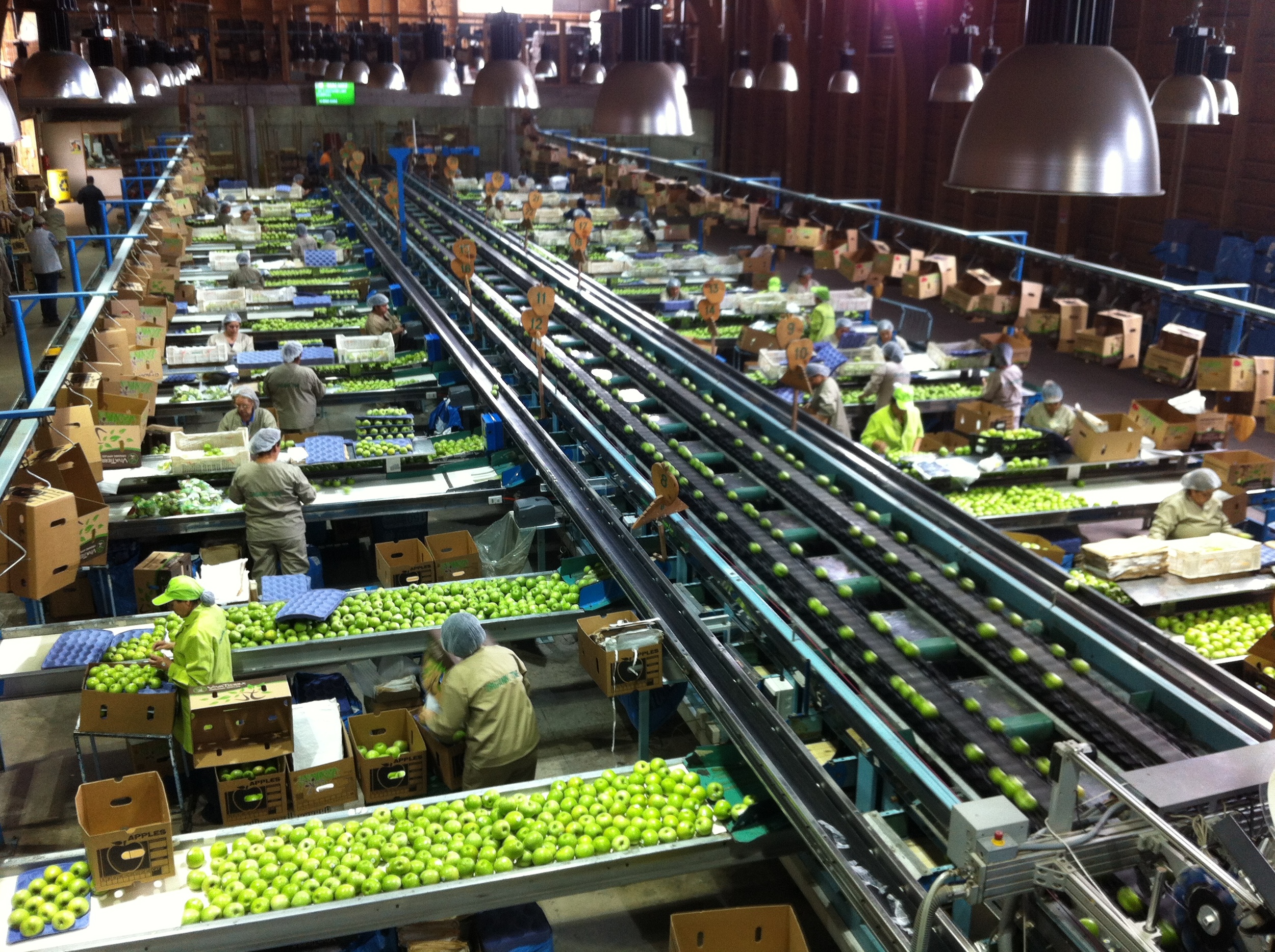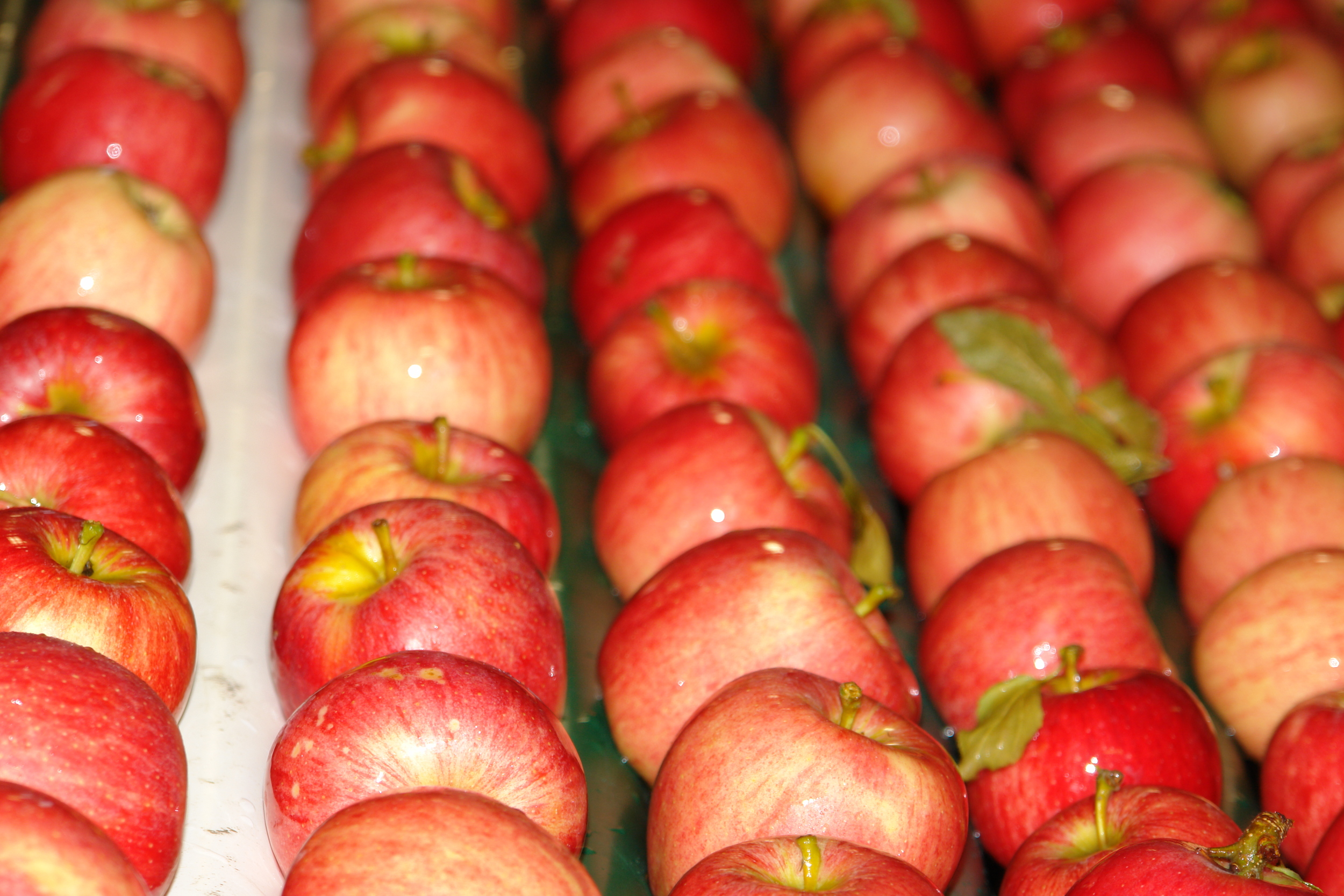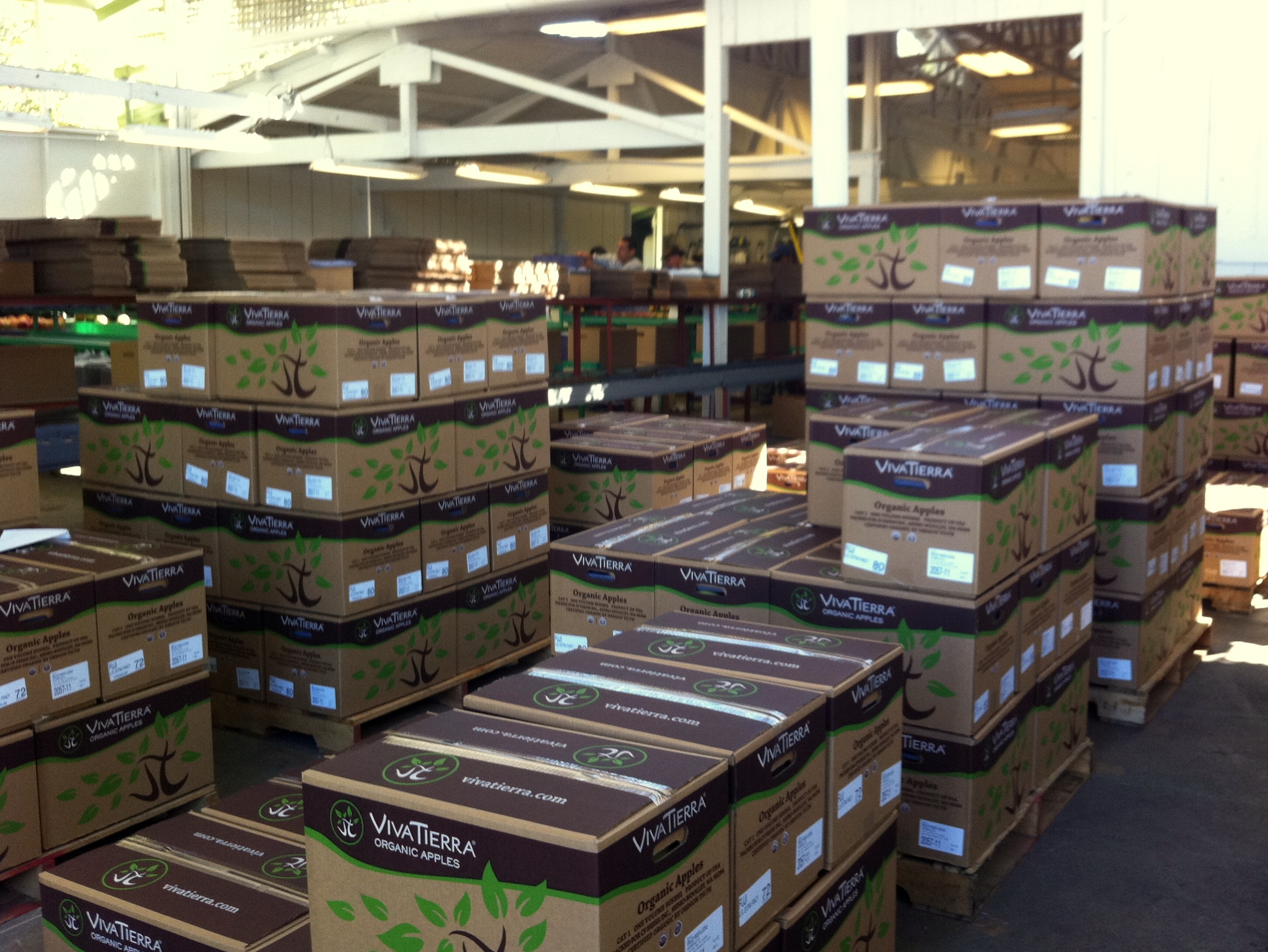Organic FAQs
If you're a consumer with an inquiring mind for all things organic, we invite you to peruse these Frequently Asked Questions and detailed answers. If you aren't finding what you're looking for, give us a shout at organic@vivatierra.com.
What is "organic"?
Organic agriculture is a system of farming practices that seeks to use ecological methods of production. Its goal is to learn from and mimic natural processes in order to produce the food we eat while also allowing our farmers to be better stewards of the land. Organic farmers forego the use of synthetic petro-chemical fertilizers, pesticides, fungicides and weed killers in favor of more environmentally benign inputs and techniques. Organic agriculture combines both old and new ideas and practices to produce healthy, tasty, vitamin-rich crops.
Unlike words such as “natural” or “healthy” which you may see on product labels, Organic is a legally defined and monitored production method for farms and agricultural products. Certified Organic products are grown on farms which comply with the USDA’s National Organic Program standards and which are inspected annually by third-party certification agencies to maintain their certification. Under US law, produce which was not grown on certified organic farms can not be labeled as Organic.
What does "organic" mean?
Defined by the National Organic Standards Board, NOSB, April 1995: Organic agriculture is an ecological production management system that promotes and enhances biodiversity, biological cycles and soil biological activity. It is based on minimal use of off-farm inputs and on management practices that restore, maintain and enhance ecological harmony. "Organic" is a labeling term that denotes products produced under the authority of the Organic Foods Production Act¹. The principal guidelines for organic production are to use materials and practices that enhance the ecological balance of natural systems and that integrate the parts of the farming system into an ecological whole. Organic agriculture practices cannot ensure that products are completely free of residues; however, methods are used to minimize pollution from air, soil and water. Organic food handlers, processors and retailers adhere to standards that maintain the integrity of organic agricultural products. The primary goal of organic agriculture is to optimize the health and productivity of interdependent communities of soil life, plants, animals and people.
The National Organic Program (NOP), which was implemented in October of 2002, supersedes the Organic Food Production Act as the authority under which organic products are produced.
What does “biodynamic” mean?
"Biodynamic" was first introduced in 1924 by Rudolf Steiner. Seventy-five years of practical application and research have advanced the method to a leading position in alternative agriculture.
The word "biodynamic" is derived from the Greek bios meaning life, and dynamis meaning force or energy. It describes a holistic way of understanding Nature, recognizing forces that regulate the growing processes in plants and animals. The ideal biodynamic farm is an individually unique ecosystem, self-sufficient with respect to soil fertility. It builds fertility through on-farm produced manures, composts, balanced crop rotations, and the use of biodynamic preparations, which stimulate the life activity of soil and plants.
Certification of biodynamic farms and processing facilities began in Europe during the 1930's under the auspices of the DEMETER-Bund, named after the Greek goddess of fertility. Management of a DEMETER certified biodynamic farm is based on comprehensive guidelines that exceed all organic production standards. The Biodynamic Trade or Certification Marks assure consumers that the foods so identified have been produced and processed by dedicated people with a high level of integrity and care under environmentally and socially responsible conditions.
What is "transition"?
Produce labeled "transition" is in the process of becoming certified organic. Transition fruits and vegetables are grown for a minimum of one year prior to harvest using only materials and methods permitted for organically grown foods under the USDA National Organic Program rules. However, they do not yet qualify as organic which requires a three year time period.
Typically, transition is a very difficult time for farmers. Along with the challenges of changing their production methods, they also face financial uncertainty, lacking a clear-cut identity for their products. In the 1990s Viva Tierra worked hard to address this problem, successfully supporting many new organic growers through those difficult first years. Today there are hundreds of acres producing certified organic apples and pears that went through their first years as transition produce with Viva Tierra. We're proud of all our growers, of course, but we can't help being especially proud of those that have been with us from their earliest transitional days.
What do organic farmers do, anyway?
Organic agriculture is a way of working with natural processes to solve some of the problems that all farmers face: weed control, insect pests, soil fertility management, plant diseases, extreme weather, etc.
Instead of toxic chemical herbicides (and genetically engineered herbicide tolerant plants), organic producers often rely on old-fashioned hand weeding or hoeing. The use of cover crops and mulch to suppress competing weeds is common, especially in orchards. On many organic farms mechanical cultivation (plowing) or flame-weeding techniques are used extensively. Sometimes animals such as sheep or chickens are "employed" to eat weeds and weed seeds from fields, especially before tilling and planting.
Regarding insect “pests” – all bugs are not pests! A balance must be struck between beneficial insects such as bees, ladybugs, and wasps and those that are destructive to crops. Organic farming allows for these beneficial insect populations to co-exist and aid in control, keeping the negative impacts of the pests to tolerable levels. Providing habitat for the beneficial creatures helps limit the population of the "bad guys" while maintaining healthy bio-diversity.
Sometimes farmers intervene by physically removing pests or their hiding places (such as dead, fallen leaves). If necessary, they may apply approved organic pesticides such as BT (bacillus thurigenensis), a bacterium that effects particular leaf-eating caterpillars. In the case of apples and pears, pheromone traps and baits are used to disrupt the mating activities of problem pests, such as coddling moths. Each crop and pest problem necessitates it own set of solutions and a learning curve for the observant organic farmer.
Wild animals and birds are typically found in much greater numbers on organic farms than on conventional farms. This can be a mixed blessing. Some birds and rodents help by eating insect pests, while others may cause damage to crops. If birds are pecking on the ripening fruit, recordings of the calls from native birds of prey can be broadcast in the orchard help scare them off. Rodents which feed on the roots and young shoots may be trapped or encouraged to leave with high pitched sounds. Deer, rabbits, and other nibbling critters can be fenced out or discouraged with the application of spicy hot pepper extract to the tasty plants.
Fertility of the soil is a key component of organic farming theory and practice: feed the soil and healthy crops will follow. Compost production is foremost in this strategy to build biologically active soil communities. These in turn support healthy root structures that allow plants to develop to their fullest potential. Other natural enhancements, including ground rock powders (such as dolomite limestone), seaweed, bone meal and cover crops are also used to add nutrients and trace minerals.
Organically grown plants are generally healthier than their conventionally grown counterparts. Like all living creatures, a healthy, vigorous plant is less susceptible to disease than a stressed or sickly one. If a disease causing organism (be it fungus, virus or bacteria) does strike an organic crop, the farmer will remove the infected material and dispose of it, usually by burning. Successful organic farmers know that careful observation is the first step in avoiding a serious disease outbreak. The second is to evaluate and address the specific vulnerability of the crop. Apples, for instance, are susceptible to a skin blemish called "scab" if the weather is cool and wet in the late spring. If rainy weather is forecast, organic apple growers apply a natural sulfur solution to the apples to prevent the growth of the scab organism.
Factors such as environmental suitability and the natural disease resistance of a particular crop or variety are evaluated by the farmer before a crop is planted. Organic growers take pride in growing the varieties most suitable for their regional micro-climate, soil type, and growing season length (not to mention flavor and personal preference). This eliminates most potential problems before they get a chance to start.
Farmers are intimately connected to their land, and over years develop a wealth of knowledge and experience to draw on to develop new (and sometimes to rediscover old) solutions to the many challenges which confront farmers everywhere. Combined with a good deal of ingenuity and hard work, some of the most productive farms in the world today are flourishing using 100% organic techniques.
What does organic mean for me?
Why should you buy organic? There are many reasons, from the environmental costs of chemical agriculture to the desire to support family farms. Then there is the flavor - although it hasn't been scientifically proven, many consumers say organics just taste better! Indeed, many organic farmers focus their efforts on growing varieties that are unique and flavorful, instead of durable and uniform. Many splendidly flavored heirloom varieties that conventional agriculture deemed "un-marketable" have been preserved by organic growers and their appreciative customers.
Increasingly, organic produce is being sought-out by consumers wishing to reduce and minimize their exposure to the residues from agricultural chemical use. And rightfully so! Studies have found chemical residues in many of the foods we currently consume, the long-term health effects of which are highly suspect. While organic is not a "residue-free" claim, it has been demonstrated that by eating organically produced fruits and vegetables, consumers can reduce their exposure to potentially harmful chemicals.
By purchasing organic food, you can:
Support organic farmers - help keep small family farms viable.
Help move agriculture to more widely adopt sustainable practices.
Encourage the conservation of land, water and other resources.
Protect the environment, wildlife and water quality.
Minimize your exposure to harmful chemical residues.
Help preserve unique and flavorful varieties of fruits and vegetables.
Provide your family with great tasting, healthy food.
Where can I get organic fruits and vegetables?
At an ever-growing number of natural foods stores, cooperatives, mainstream grocery stores, and restaurants. If the store where you buy your fresh produce doesn't carry organic items, we suggest you talk to the produce manager. Let them know that you are interested in organic produce!
Where can I get those extra special varieties that I love?
Farmer's markets are a great source for unusual varieties. You can also talk to the produce manager at the store at which you shop. Let him/her know what you are really looking for, and chances are they can find it for you.
The store where I shop has organics, but not from Viva Tierra. Help!
If you can't find our brands in your local store, please let us know the name and location of the natural food or grocery store where you shop. We put them in contact with a distributor. Email us at organic@vivatierra.com.
Is Viva Tierra Organic, Inc. certified organic?
Viva Tierra Organic, Inc. is certified by Oregon Tilth as an organic handler. We have been certified since 1994. Click here to view our current certification, and to learn more about the US and International certification process.
All our growers, packers, and storage facilities, both in the US and abroad, are independently certified by USDA National Organic Program accredited third-party agencies including: WSDA, Oregon Tilth, CCOF, IMO, Argencert, OCIA, OIA and more.
Is organic fruit waxed?
Under the USDA National Organic Program rules, waxing of organic fruit is allowed using non-synthetic, food grade substances such as Carnauba wax. However, most of the fresh produce sold by Viva Tierra is not treated with any wax.
I didn't know Carnauba wax was natural. Where does it come from?
Carnauba or Carnuba wax comes from a Brazilian palm tree (Copernica Cerifera). During the dry summer months, the palm produces a thick waxy coating on the leaves to conserve moisture and protect the tree against dehydration. The leaves are harvested, sun-dried, and thrashed to remove the wax which is then melted, purified, and graded. Carnauba wax is widely used in the food, cosmetic, pharmaceutical, and other industries.
What is this white, waxy or greasy coating on my apple?
Many varieties of apples produce a natural wax coating on their skin called "bloom" especially after spending some time in storage. The wax coating on the skin helps the apple to conserve moisture and provides some protection against attack by decay causing microbes. Granny Smith apples are especially notorious for producing a heavy, greasy bloom. A gentle buffing with a soft cloth over the surface of the apple will really bring out its natural shine.
What is this white, powdery residue I found on my apple?
It's a product called Surround WP which is 95% kaolin clay, a naturally occurring mineral which has been specially milled into a superfine powder. The other 5% consists of spreading and sticking agents which help the clay to uniformly coat the fruit and leaves of the trees when it is mixed with water and sprayed in the orchard. Surround is approved for use in certified organic production under the USDA National Organic Program. It's perfectly harmless to humans, plants, birds and wildlife. Insects find it irritating, which is exactly what we love about it.
What is it used for?
All kinds of things! Surround is used to help control pests such as: pear psylla, plum curculio, cutworms, pear midge, pear slug, apple sucker, climbing cutworm, eastern tent caterpillar, gypsy moth, japanese beetle, june beetle, grasshoppers, green fruit worm, leafrollers, lygus bug, mormon cricket, cicada, stink bug, tarnished plant bug, thrips, fabria leafspot, apple maggot, codling moth, rose chafer, aphids, naval orangeworm, husk fly, blueberry maggot, blackberry psyllid, flea beetles, grape leaf skeletonizer, bean leaf beetle, mexican bean beetle, powdery mildew, cucumber beetle, boll weevil, armyworm, black vine weevil, and fruit flies.
It also helps protect fruit from sunburn (yes, fruit can sunburn!) and heat stress in hot summer weather.
How does it work? Is it toxic?
Nope, it's not toxic or poisonous at all. Depending on the insect pest and the crop being protected, Surround works in a few different ways. In some cases, the white coating may prevent the insect from identifying the host crop so they don't even try to land, feed or lay eggs. In other cases, the clay coating seems to cause insects to deem the fruit or leaves unpalatable, too dry and dusty to eat. Other insects become coated with the clay particles causing them so much irritation that they simply move on to other, unsprayed plants rather than remaining to feed or lay eggs. Imagine having a picnic in a sandy desert on a hot, windy day, with no way to rinse the annoying gritty particles off of your skin or your lunch, and you get the idea.
As for sun protection, it works just like that thick white sunscreen lifeguards use on their noses. Simple, natural, and effective!
Why don't you clean it off the apples before you sell them?
Well, we do. After harvest, all our apples and pears are "floated" out of the orchard bins, rinsed, and brushed with soft bristles before they are dried, sorted and packed into boxes. Sometimes some Surround residue remains after washing, especially in the valleys around the stem and calyx (blossom) ends of the apples. You can remove any remaining clay residue by rubbing gently with a damp towel.
Are there chemical residues on organic produce?
It isn't likely, but it is possible. Organic is not a residue-free claim. It is difficult to define what constitutes a "chemical residue". Some natural materials such as iron, sulfur and copper, approved for use on certified organic farms, can leave a detectable residue. Despite being natural and generally considered safe, these are still "chemical" residues. However, even if we narrow the question down to potentially harmful chemical residues, organic product still isn't guaranteed "residue free".
Doesn't that mean that some organic growers are cheating?
No. An unfortunate truth is that in today's chemically saturated world, no farmer can guarantee their produce to be 100% free of chemical residues. Although the materials applied to organic crops are strictly monitored, research has shown that trace amounts of pesticides from conventional farms can drift several miles, even on calm days. Even organic produce completely free of chemical residues at harvest may be contaminated on the store shelf by touching conventional produce or even by being handled by shoppers.
What about produce advertised as "pesticide free"?
Sorry. According to the USDA Pesticide Data Program, which annually tests about 15,000 fresh fruits and vegetables, an average of 46% of product samples labeled as "pesticide free" tested positive for chemical residues between 1993 and 2002.
If residues can be anywhere, does it matter what I eat?
Yes! If you are concerned about reducing your family's exposure to potentially harmful chemical residues, eating organic is the solution.
Research has consistently proven that organic produce has significantly lower levels of residues than conventional produce. According to the USDA PDP an average of 69% of conventional samples tested positive for chemical residues between 1993 and 2002. Only 18% of organic samples tested positive during the same period. Conventional produce is also much more likely to test positive for multiple chemical residues than organic produce. About 45% of conventional produce samples contain multiple residues, while only 7% of organic samples do.
In 1996 the USDA found the odds of buying a five-pound bag of conventional apples with nine or more pesticide residues were equal to the odds of buying a bag with no residues. A person consuming five servings of conventional fruits and vegetables a day - as advised by the USDA - is ingesting at least six chemical pesticides daily. The nine fruits and vegetables found to have the heaviest levels of contamination are apples, pears, peaches, cherries, nectarines, strawberries, spinach, celery, and bell peppers. It is uncommon to find conventionally grown samples of these items without chemical residues.
While the full health impacts of exposure to chemical residues on fresh fruits and vegetables may not be conclusively determined for years to come, there is no question that these residues do pose a risk, especially to babies and children. The choice is clear - eat organic!
For more information on chemical residues on fresh produce, see the May 2004 State of the Science Review (SSR) from The Organic Center examining the results of residue tests performed by the USDA, California Department of Pesticide Regulation, and the Consumers Union.
Are any of your products Genetically Modified (GM)?
No. The USDA's National Organic Program rules expressly prohibit genetic engineering in organic production. Our plants are grown using time honored breeding and propagation techniques, such as cross-pollination and grafting. No gene splicing, genetic modification, or recombinant DNA technology, ever.
I’ve heard that antibiotics are once used on organic apples and pears. Why?
The National Organic Standards Board (NOSB) allowed the use of the antibiotics Tetracycline and Streptomycin in the production of organic apples and pears from 2002 to 2014. This was in response to a bacterial disease called “fire blight” which is caused by the bacterium Ervinia amylovora. Outbreaks of fire blight are nothing short of devastating to apple and pear orchards. In the early stages, the blight kills the blossoms and growing shoots. If not controlled, the infection can spread rapidly through an orchard, killing the trees and leaving the orchard looking as though it had been scorched by fire.
The allowance for use of these antibiotics in organic agriculture ended on October 21, 2014. Thankfully, researchers and organic growers have continued to make progress developing more effective non-antibiotic controls.
Does this mean there were antibiotic residues on organic fruit? What about in the environment?
Many studies examined the issue of antibiotic residues in the orchard and on the harvested fruit. Beginning in the 1960s and continuing through the 1990s, studies consistently found no residues on harvested fruit. However, due to increasingly sophisticated testing methods, in 2005 researchers were able to detect extremely low levels (.002 to .013 parts per million) of antibiotic residues on apples from treated orchards. These levels are much too small to have any effect on humans. In fact, researchers calculated that, at the highest levels found, a person would need to eat 365 lbs of apples in a single day to accumulate enough residue for it to have any effect, and 6,285 lbs to equal the common prescription dose!
Aren't antibiotics inconsistent with sustainable, organic principles?
While organic principles require the use of biological, physical or mechanical methods or natural controls to prevent or control crop pests, weeds, and diseases, organic regulations permit controlled use of carefully evaluated inputs when natural methods are insufficient to address critical issues of production. The USDA National Organic Program regulations specifically prohibit the use of any synthetic substance in organic production and handling unless the substance is on the NOSB’s National List. Allowance of any synthetic substances is based on the Board’s exhaustive technical review and a lengthy comment period from the public and stakeholders in the organic industry to ensure minimal adverse impact on the environment and to human health, and with consideration of alternative, biologically-based substances.
Why do you put those little stickers on the fruit?
Those little stickers are important for several reasons. First, they help the retailer (and the consumer) distinguish between varieties and between organic and non-organic items. Second, they usually have a code number (Price Look Up, or PLU) which allows the cashier to accurately ring up the sale. They may even have a tiny barcode so that the cashier can simply scan the produce at check-out, speeding up grocery store lines. The stickers also differentiate between brands and growers. When you eat a terrific apple, for instance, note the brand on the sticker and look for that brand when you shop again. Not all produce tastes the same! Some growers (and their brands) are simply better than others.
The store sign says its organic, but the sticker just has a number - it doesn't say organic anywhere! How can I tell if it's really organic?
PLU codes for organic (and biodynamic) produce have 5 digits and always begin with the number "9". PLU codes for non-organic produce have only the last 4 digits. For example, an organic Fuji would be labeled 94131, while a non-organic Fuji would be 4131.
Aren't those stickers wasteful? Can they be recycled?
We think the stickers are less wasteful than the alternatives for labeling. When you compare the size of PLU stickers to say, plastic film wrapping, styrofoam trays, plastic mesh bags, or even the "organic" labeling tape that many stores use, it becomes obvious that stickers are a better option. Many grocery and natural foods stores simply won't sell fruit or vegetables which are not labeled. Unfortunately, the stickers cannot be recycled.
I'm a vegetarian. Is the sticky on the stickers vegetarian?
Yes. The glue on the stickers is food grade and contains no animal ingredients. In fact, the stickers themselves are non-toxic. You can eat the whole thing with no ill effects (although they aren't particularly tasty).

